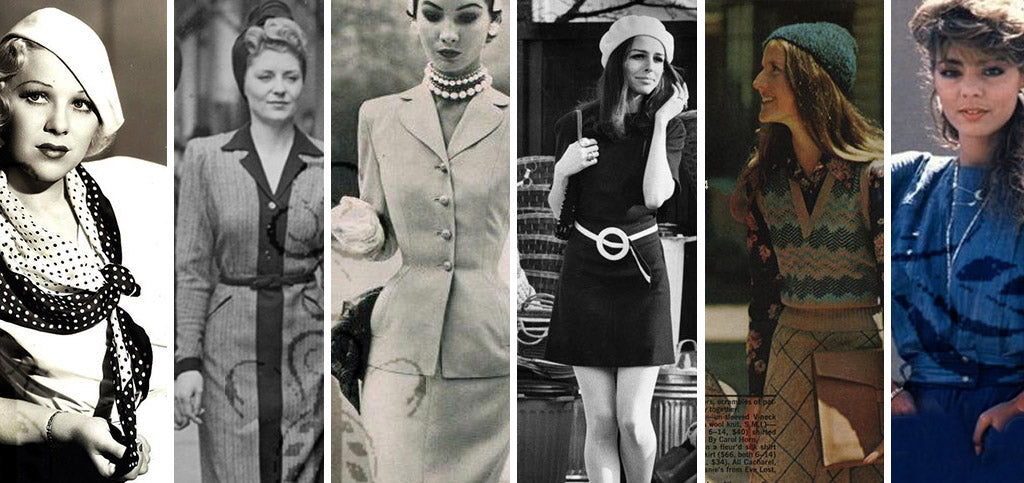In 1930, the bias-cut dress was all the rage, both in South Africa and overseas. It’s ability to emphasise a woman’s shape without looking common made it a natural choice for workwear. Most fashionable clothing in South Africa was imported at this stage but the Thirties saw the start of many clothing companies which began to manufacture fabric and garments locally. Dress codes are formal, and strict. Skirts on the knee, petticoats, pantyhose and closed shoes are generally the norm and this doesn’t change much for decades.
The Forties saw the effects of World War II. Fashion became much more conservative. Cardigans with matching skirts and modest blouses were very fashionable for corporate wear.
The 1950s saw the return of prosperity and with it much more extravagant clothing. Skirts were fuller and blouses were adorned with lace, ruffles and ribbons. Dior’s new look with its nipped in waist and fitted blouses was the inspiration for office wear the world over. Feminine but conservative, it was perfectly suited to the corporate world.
The Sixties were a turning point in many areas of popular culture with bohemian style coming to the fore. Hippies were seen wearing flowing garments in brightly coloured patterns, with silky hair hanging to the waist. Miniskirts, bellbottoms and tie-die prints abound. As a result, corporate dress codes relaxed a bit, but the look of Woodstock didn’t ever quite make it to the offices of South Africa. The boyish mod look of London’s fashion set, lead by models like Twiggy, was more office-appropriate and the shift dresses she made famous were seen on local working women.
The Seventies were the disco decade. Halter necks, bell-bottoms, platform shoes and colour palettes including mustard, brown and orange were all the rage. New synthetic fabrics like polyester became mainstream and denim moved from just a material for workwear into everyday wardrobes. Even at this stage with casual wear going through such a transition, most South African women are expected to wear petticoats, pantyhose and heels to work.
In the 1980s, power dressing was the buzz word. Young women were told they could have it all and they went out into the working world dressed to conquer it in power suits complete with bold shoulder pads, hair teased as big as it could get and plenty of costume jewellery and bling. For less formal wear, frills and fuss were in with puffed up sleeves and ruffled skirts on all the catwalks.
The Nineties saw a bit of OTT fatigue after the excess of the Eighties. Fashion follows a more minimalist aesthetic with monochrome palettes and clean lines in all the shop windows. Costume jewellery is laid to rest and silhouettes are streamlined. For the first time, corporates began to ditch the outdated concepts of petticoats and pantyhose, opting instead to specify that clothing should simply not be see-through.
Post millennium, fashion has been harder to pin down. In essence, expressing your individuality through your style is the trend with many people opting to add a touch of quirk to their working wardrobe. Dress codes are generally less formal with fewer rules set in stone and women are able to wear what they want to work within a series of guidelines at most corporate companies. Many corporates are embracing the potential clothing has to be a part of their brand identity and planning branded uniforms for staff which communicate certain brand messages through the colour, branding and style of the garments.





